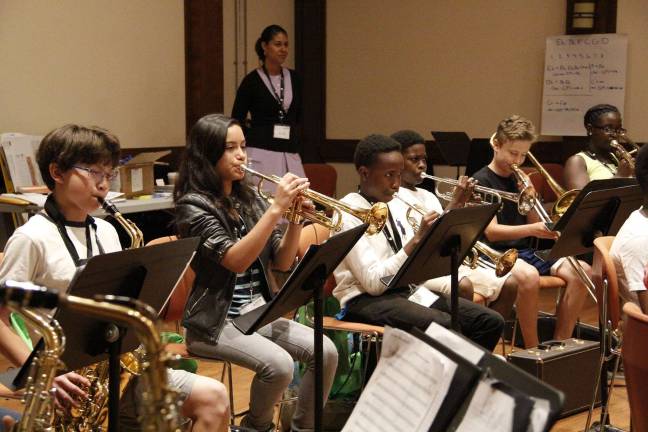For every artist, auditioning is a reality. If you want to land a desired role in a production, or nab a spot in a prestigious arts conservatory, you have to sing, dance or act alone on a stage before a group of judges and show them what you got.
But when it comes to auditioning for a top arts high school in New York City, not every student has the tools to succeed. Voice coaches and private tutors who might provide the necessary instruction to win a spot in a top arts high school lie just out of reach for many of New York City’s Title 1 middle-schoolers, who are often living below the poverty line. A lack of money and access to private instruction prevents Title 1 students from shining in the audition room and winning spots in prestigious arts high schools. As a result, many deserving students fall through the cracks. Predominantly white, upper-middle-class students end up taking the lion’s share of coveted spots at top arts high school, which leads to a serious lack of diversity in the schools’ student bodies.
Lincoln Center and the city’s Department of Education have joined forces to address this issue. The two institutions have started Middle School Arts Audition Boot Camp, a tuition-free arts education program that prepares middle school students for the high school audition process. For the first two weeks in August, middle-schoolers come from as far as the Bronx and Staten Island to the Lincoln Center campus to hone their skills in theatre, ballet, music and design to prepare for the audition room and have a better chance at the school of their choice.
The Boot Camp covers the obvious and not-so-obvious ways to impress a panel of judges. “We teach them ... the nuts and bolts of auditioning ... how to walk into a room, what to wear, how their resume should look, [and we] make sure they have the right [repertoire],” says Russell Granet, the acting president of Lincoln Center. “We also make sure they are following the schools’ guidelines. If [a student has] a great talent, but start[s] with a Beyoncé song, you can’t get them into the school.... These are kids with something inside them.” The program, he said, gives them “the resources to see that through.”
The training appears to be working. In the program’s first year, “we had 90 kids, and 90 percent of those ninety kids got into the school of their choice,” notes Granet. Now in its fifth year, the program is “up to 260 kids, and 97 percent of kids got into their first choice school, [and took up] 67 spots at Laguardia,” the city’s leading arts high school and the setting of the classic movie “Fame.”
The city’s top arts high schools are becoming more diverse as a result, and Title I students get access to a better education than they would have had otherwise.
The program’s benefits for students of the boot camp, however, are not just educational. Granet notes that among the students participating, “you have kids who have never been out of their [home] borough before. They’re being opened up to Lincoln Center. The idea that Lincoln Center is a resource for them is impactful. That’s a great thing that an eighth grader has ownership of a performing arts center in their hometown.”
Granet is also proud of the passion and seriousness with which Lincoln Center treats the program. “There’s something significant about a cultural institution of Lincoln Center’s magnitude focusing on eighth graders,” he said. “It’s a very positive message that Lincoln Center takes this work as seriously as the work we do on our stages.”
And because of the rigorous training the camp provides, students will leave with the conviction that any stage, whether it be a two thousand seat Broadway house, or a high school auditorium, is well within their reach.

